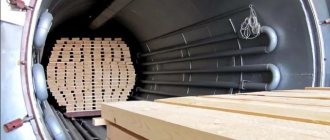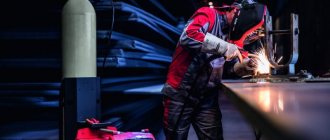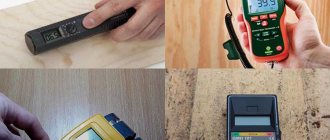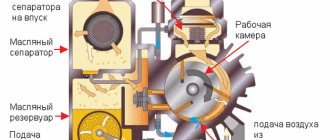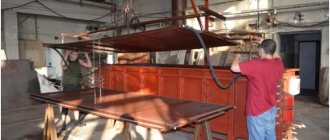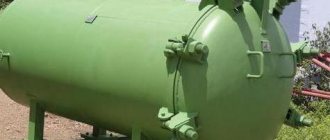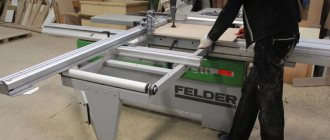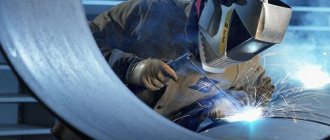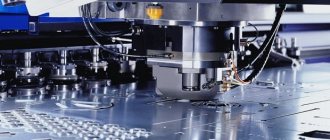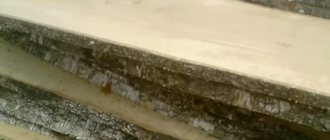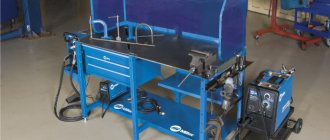Types of drying equipment
The main types of drying chambers include:
- Dielectric.
- Microwave.
- Convector
- Vacuum
- Aerodynamic
The method of drying wood in various ways was invented back in the 60s, but due to the high costs of electricity and the complexity of the design, the technology began to be used only recently. Most often, convector type dryers are used all over the world. Why is this happening? Other designs can be used with a number of restrictions and subtleties of use. The main disadvantages of using induction, condensation and vacuum dryers for wood:
- Aerodynamic chambers require more power consumption;
- Condensation structures are expensive, and drying in them lasts 2 times longer than in convector ones.
- Vacuum dryers are expensive and are also expensive to maintain.
- Dielectric ones require high energy costs, although they are considered one of the best.
Convector dryers
Convectors of different designs are used for drying wood of various species and sizes. Due to the simplicity of their design, convection chambers are inexpensive to maintain, which indicates reliability. Therefore, to increase profitability, in 90 cases out of a hundred they purchase them.
Operating principle of a convection dryer
Heating occurs from a gaseous carrier (drying agent). When heated, the raw material is tapped. The drying agent can be steam, flue gas, or air. The moisture released from the wood serves as an additional humidification of the agent; the excess is drawn into the atmosphere through ventilation.
The air exchange in a convection dryer is no higher than 2% of the total amount, so the energy efficiency is noticeable.
Convection dryer components and equipment
There are many configurations from different manufacturers, but there are basic options:
- Equipment for a drying hangar that has already been built or is just under construction.
- Full construction with hardware.
Equipment housing
[ads1]The building is made entirely of metal and is assembled on a monolithic columnar foundation. The metal used for manufacturing is carbon steel or aluminum with a corrosion-resistant coating. The outside and inside of the hangar is covered with aluminum sheets. Individual elements inside the structure (deflectors, false flows, amplifiers, etc.) are also made of aluminum. The chamber is insulated with mineral wool in the form of slabs.
The structure is assembled in compliance with GOSTs and SNiPs. Options requiring additions and extensions are carried out according to an additionally developed scheme. The basic assembly is designed for an average snow load.
Models of convection chambers
Convection drying chambers are produced by domestic and foreign companies. The most common are Helios: ASKM-7, ASKM-10, ASKM-15, ASKM-25. They are used for drying any type of wood of drying categories I, II, III and 0. According to reviews, these models work quickly, since German fans are used in the mechanism. And installation and maintenance of ASKM models is simple. Price from 700,000 rubles, depending on size and power.
Vacuum drying chambers
The designs are designed specifically for expensive types of raw materials (teak, wenge, rosewood, oak, angera, etc.). Vacuum dryers can also be used for any coniferous or deciduous wood.
Working principle of a vacuum dryer
The vacuum dryer operates by convection heating of wood and vacuum removal of excess moisture. Temperature maximum +65 0С. But due to the vacuum, 0.09 MPa boils at 45.5 0C. This allows the drying process to be carried out without the aggressive effects of high temperatures, which does not create high internal stress, and the wood does not crack.
During operation, the temperature rises to 65 0C, the automation is activated and the electric boiler is turned off. The top part of the wood begins to cool and moisture from within begins to flow to the drier parts. During the entire drying process, such processes can occur up to 250 times. This way the moisture is evenly drawn out along the entire length and depth of the raw material. The maximum moisture difference in different parts of the tree can be 0.5-1.5%, and completely dried wood has a moisture content of 4-6%.
Models of popular vacuum designs
The most common model of vacuum chambers is Helios. Helios wood drying chambers differ in power, loading volume and other technical characteristics. More details about TX Helios in the table:
| Technical parameters, Helios Vacuum (GV) | GV-4 | GV-6 | GV-9 | GV-12 | GV-16 |
| Possible volume of loaded raw materials, no more, m3 | 4 | 6 | 9 | 12 | 16 |
| Parameters of the working mechanism (length, width, height), cm: ДШВ | 430/192/192 | 630/192/192 | 650/230/230 | 850/230/230 | 1230/230/230 |
| Maximum possible heating temperature, degrees. WITH | up to 65 | up to 65 | up to 65 | up to 65 | up to 65 |
| Discharge kg/cm2 | — 0,92 | — 0,92 | — 0,92 | — 0,92 | — 0,92 |
| Drying time of various types and sections of wood to a moisture content of 4-5%, days: | |||||
| Oak, cross-section 5.2 cm, humidity. 50% | 19 — 25 | 19 — 25 | 19 — 25 | 19 — 25 | 19 — 25 |
| Oak, cross-section 5.2 cm, humidity 30% | 11 — 13 | 11 — 13 | 11 — 13 | 11 — 13 | 11 — 13 |
| Oak, Section 2.5 cm, humidity 50% | 10-11 | 10-11 | 10-11 | 10-11 | 10-11 |
| Oak, cross-section 2.5 cm, humidity 30% | 8-9 | 8-9 | 8-9 | 8-9 | 8-9 |
| Coniferous, cross-section 5.5 cm, humidity 50% | 7-8 | 7-8 | 7-8 | 7-8 | 7-8 |
| Coniferous, cross-section 5.5 cm, humidity 30% | 6-5 | 6-5 | 6-5 | 6-5 | 6-5 |
| Required network voltage, V | 380 | 380 | 380 | 380 | 380 |
| Connected power, kW | 15 | 18 | 30 | 36 | 72 |
| Average power used, kW | 8 | 10 | 17 | 20 | 35 |
| Helios drying chamber size (length, width, height), m: LSHV | 6,12,22,4 | 8,12,22,4 | 8,32,352,4 | 10,323,524,0 | 13,323,524,0 |
| Weight, t | 4 | 6,5 | 7,7 | 9,5 | 17,5 |
What problems have we encountered most often with modern drying chambers?
During my rather long practice in various industries, I had to deal with various nuances of operation.
Problems can arise when working with any camera. Even made by a well-known brand and quite expensive. Most often, these are leaks in various pipes caused by corrosion, downtime caused by a malfunction and lack of necessary spare parts (for imported cameras this problem is very relevant) or waiting for a specialist. Quite often problems arise with fans.
But the main problem, in my opinion, is the uniform heating of the stacked stack to its entire depth and the effective extraction of moisture:
- Wood is heated in different chambers, from different manufacturers, with different agents (water, air, radiation waves, etc.), heating structures of different types, as a result, the lumber dries differently.
- The moisture evaporated in the wood must be collected as efficiently as possible at the right time.
These 2 problems had to be solved more often than others, since it is inherent in almost all types of cameras (to varying degrees).
The reasons can be listed for quite a long time. But most often it is:
- under-dried material at the end of the stack and over-dried material at the beginning, or at the top of the stack and in the middle.
- the drying agent between the rows of the stack may practically not penetrate or may differ significantly in temperature, which reduces the process to the level of natural drying in terms of time and quality.
In the first case, installing fans with reverse rotation often helps to solve the problem. You can “play” with their placement and total number to determine the optimal solution. But this cannot be called a panacea. The desired result is not always achieved.
In vacuum chambers everything is much more complicated; the design of the heating elements and the moisture removal system will have to be redesigned. Only professionally performed calculations and competent design (modification of the camera) can help. In my experience, this is a lot of time and money wasted.
The main thing to understand is that
NOBODY has yet managed to completely solve ALL the problems of drying uniformity and quality of finished products!
And, in the foreseeable future, there is no solution to this problem. Therefore, the main goal that every manufacturer strives to achieve is to minimize the percentage of defects and bring the parameters as close as possible to ideal ones.
In the case of convection chambers, make sure that the fans inside are not remote. They have a long shaft, which is much more likely to break. These products are characterized by lower efficiency and require more thorough and frequent maintenance.
Moisture protection of fan motors must be class “H” (at internal temperatures in the chamber ≤ 130 °C) or “F” (at temperatures less than 85 degrees).
It is necessary to have a reverse with an efficiency of about 90%.
Aerodynamic wood drying chambers
These drying chambers resemble a metal box lined with aluminum professional flooring. An aerodynamic chamber of various modifications is used to dry all types of wood, with a load of 3-25 m3. To order, you can purchase individually designed chambers with a loading capacity of up to 43 m3.
The good thing about the aerodynamic chamber is that the operation is fully automated and requires a minimum number of workers.
The frame of the aerodynamic chamber consists of solid metal sewn onto a supporting frame. The chamber is made in the form of a quadrangular box, into which it is convenient to load wood by machine or by train. ways. The entire internal structure is equipped with automatic condensate collectors.
Principle of operation
Drying is carried out under the influence of aerodynamic energy. Heated air circulates in the chamber under the influence of a specifically designed aerodynamic fan. Due to compression, the air in the chamber increases the temperature on the centrifugal fan, specifically on its blades. This is how aerodynamic losses are converted into thermal energy.
Heat is pumped into the chamber, depending on the design, reversely or dead-end. The aerodynamic chamber is started with one “start” button and opens only after the cycle is completely completed.
Models of air dryers
The most common aerodynamic dryers are Gelos SKV-25F, SKV-50F, SKV-12TA, SKV-25TA, SKV-50TA, as well as Italian EPL 65.57.41, EPL 65.72.41, EPL 65.87.41, EPL 125.72.41, EPL 125.87.41. Helios was developed specifically for drying coniferous material. They cost from 1,500,000 rubles.
Pros and cons of different types of wood drying kilns
Small companies mainly use Russian-made cameras. In addition, Czech and Italian are used quite often, less often Finnish (mainly in the north-west of the European part of Russia). This preference is explained by the following factors:
- optimal balance of productivity, performance characteristics, durability and cost;
- opportunities for prompt acquisition of spare parts and availability of after-sales service (the vast majority of dryer manufacturers have a wide network of representative offices in the CIS countries, including Russia);
- minimal delivery times, relatively low costs for customs and delivery, the possibility of supervision of installation and personnel training.
Regardless of the principle implemented in the design that forms the basis of the drying technology (convective, condensation, vacuum, etc.), any design solves the same problem - evaporates the moisture contained in it from the wood. That is why, when considering the issue of quality of forced drying, first of all, pay attention to such indicators as:
- drying period to a given moisture content;
- the occurrence of internal stresses during the drying process and the possibility of its relief;
- the difference in the moisture content of the outer and inner layers of lumber after the drying process is completed.
I would like to say a few words about the specific drying technologies that we had to deal with.
Convection drying chambers for wood
Cameras of this type are most common in Russia, and in all regions. Therefore, experience with such chambers forms the basis of my experience in servicing products for forcibly reducing the percentage of moisture in lumber.
The technology underlying this drying principle is very simple. Moisture. Contained in the tree, it is removed from it by blowing it with a stream of hot air. The latter is heated by electric heaters (in the vast majority of models). The flow of the required strength and direction is formed by blocks of powerful fans, the number of which can reach ten or more units.
An important advantage of chambers of this type is the structurally provided possibility of steaming wood. This allows you to minimize internal stresses (ideally, completely zero them).
In all the chambers with which I had to work, the parameters of the internal environment created inside were measured by an installed psychrometer, and the drying process was controlled by built-in automation.
The process is divided into several stages, at each of which the moisture content of the material and the magnitude of internal stresses are different.
The upper layers of lumber, when blown with hot air, dry faster than the inner ones. And the layers near the core do not have time to release moisture with the same intensity. The result of this imbalance is internal stresses, which can provoke the occurrence of cracks.
To compensate for this negative process, almost all convection chambers implement an additional stage of moisture treatment, when moisture is sprayed onto the surface of the material undergoing drying. Then the drying process by supplying hot air continues again.
If the alternation of these stages takes place in a timely manner, after completion of processing the resulting material has approximately equal moisture content throughout the entire volume.
However, this is in theory. But in practice, a lot depends on who made the camera, its model and the notorious “human factor”.
If the product is purchased from a reliable manufacturer, installation is carried out in the presence of a company representative, and operation is carried out strictly in accordance with the manufacturer’s recommendations, then in such devices it is possible to obtain finished lumber with negligible internal stresses, which eliminates its cracking, increases the yield of finished products and, as a result, profits companies.
I would include the following advantages of the types of cameras considered:
- the presence of models with significant one-time capacity (about 1000 m3), which is essential for large companies;
- the ability to fine-tune the control process, providing for changing the values of essential parameters at any stage of drying;
- process control in automatic or semi-automatic modes;
- minimizing production costs.
Among the shortcomings I cannot fail to mention:
- sufficiently long drying times;
- the need for trained personnel to service the device.
Condensation dryers for wood
The main difference between this technology and the one discussed above is the following technical feature. Moisture from the wood undergoing drying, released into the air of the chamber, condenses on special coolers available in the design, is collected in special drainage channels and removed from the chamber, and the air thus dried continues the closed cycle of blowing the wood.
Coolers are charged with freon. Operating temperatures in such dryers are ≤ 45 °C. This significantly increases the drying time of one bookmark, even in comparison with convection chambers. Depending on the selected device model, it may or may not have such an option.
If available, moistening is carried out after completion of the first stage of drying, which allows minimizing the internal stress that has arisen in the upper layers of the lumber.
In models where humidification is not provided, this issue is solved by the presence of inverters on the fan motors, which allow you to change the speed of the supplied air flow (This is done in order to ensure smoother and more uniform release of moisture from the wood). In other cases, it will not be possible to prevent cracking of products undergoing drying.
Chambers of this type are the best choice if you are drying mainly thick lumber or products made from dense wood (for example, ash or oak).
If you plan to dry wood for subsequent use in carpentry, such a solution can hardly be called the best.
The advantages of the method include:
- low power consumption;
- almost 100% elimination of cases of warping of lumber.
There are quite a lot of disadvantages. Main:
- very long drying times, which are several times higher than those of convection-type chambers;
- the emergence of additional costs due to the use of freon;
- the quality of the finished materials cannot be called ideal;
- wood treated in this way has low resistance to pathogenic microflora (low temperatures in the chamber do not allow sterilization of workpieces).
Aerodynamic drying chambers for wood
Twice I had to work on similar cameras. They have the simplest design compared to other types of products. This is an ordinary metal box with fans installed in it.
The air is heated due to the heat generated by operating fans (the mechanical energy of the rotating rotor is transformed into thermal energy).
When the required humidity in the chamber is reached, the fans stop. This is the simplest DIY solution. However, this drying technology has many disadvantages. Therefore, I would not recommend purchasing such cameras.
The main disadvantage is the fact. That blowing hot air dries the wood unevenly. While the upper layers are almost dry, the inner layers still have a fairly high degree of humidity. The result of such an imbalance is significant internal stress in the finished products.
It is strictly not recommended to use such lumber in carpentry. When you try to “dry” such a material, it is guaranteed to burst (crack).
Of course, we can refer to the fact that the problems of internal stresses are inherent in any drying technology. But in the variant under consideration, they are the most significant and expressed as clearly as possible.
There are advantages to be found in any method.
The advantages of aerodynamic drying include:
- ease of installation and low cost of operation (it is enough to connect the installation to a 3-phase network at 380V);
- drying is performed with considerable intensity;
- the cost of such drying chambers can be considered low (compared to products of other types), if expenses are not considered. Which entails subsequent exploitation.
The disadvantages are:
- unsatisfactory drying quality;
- long drying time;
- very significant costs for paying for electricity.
Infrared drying chambers for wood
The main difference of the drying technology under consideration is the absence of the requirement to create a closed volume room (the chamber itself). To remove moisture, special designs called infrared cassettes are used. When laying stacks for drying, they are placed between layers of laid wood. The infrared radiation they create evaporates moisture from the wood to its entire depth.
In summer, drying in this way can be carried out under canopies in the open air, having previously protected the stack from direct rain.
I had to work with such devices privately, in my own workshop. I really like to test new technologies available to me for drying and processing wood.
The results obtained, in general, can be called satisfactory. But the technology “didn’t look good.” And for industrial use, this solution is absolutely unacceptable, due to the duration and complexity of the preparatory stage of laying and subsequent selection of finished lumber.
The advantages include:
- autonomy and compactness of technology;
- ease of bringing into working condition;
- high efficiency.
As disadvantages, you should pay attention to:
- significant difficulties in organizing control over drying parameters;
- Possibility of use on bookmarks with limited volumes not exceeding 5 m3.
Microwave drying chambers for wood
The wood in them is dried by implementing a process similar to what occurs in a household microwave oven. The only difference is in the sizes of the products.
High-frequency radiation does not damage the wood, facilitating the delicate and uniform removal of moisture throughout almost the entire depth of the workpiece. The time it takes for finished lumber to reach a given level of moisture content is quite short.
Out of curiosity, I worked with friends on a similar installation (new knowledge is never superfluous). The results turned out quite good. However, the complexity of the device, the rather high cost, the high cost of components (the price of the same magnetrons starts from 300,000 rubles, and the service life, unfortunately, is not long) and most importantly, the small volumes of one-time loading make such a solution unprofitable either for large-scale production or for private owners.
The latter is especially true if you estimate how much it costs to maintain such cameras, especially if you have to replace a broken magnetron generator.
But, as they say, “it depends on the taste and color...”. The choice is yours.
The advantages of such installations are:
- high drying speed and excellent quality of the output material;
- economical consumption of electricity.
Among the shortcomings, I would first of all name:
- insignificant one-time loading capacity, not exceeding -7-10 cubic meters;
- very complex control over the progress of the process;
- high cost of magnetron generators.
Vacuum drying chambers for wood
I fell in love with these cameras. The structures are completely sealed (in the vast majority of models). During the drying process, a pressure below atmospheric pressure is created inside them. Therefore, drying can be carried out at relatively low temperatures (up to 65 °C).
This is explained by the fact that a decrease in pressure leads to water boiling at lower temperatures. Therefore, the required drying effect can be achieved with “little loss” without using high temperatures.
This automatically reduces heat loss in a chamber of this type and allows for a very slight change in the color of the material undergoing drying.
The design features of such products depend on who manufactured them. For example, Italian WDE Maspell dryers, which are often used by Russian timber processors, and some domestic kilns have water heaters. Other domestic manufacturers prefer electric heating elements.
The main distinctive feature of drying using vacuum technology is a curious situation when the temperature to which the drying board is heated exceeds the boiling point of water vapor (another name, saturation temperature). As a result, all processes taking place inside the board are significantly accelerated, and the board dries faster.
This technology makes it possible not to use aggressive high temperatures on the material during the drying process.
But, while praising this or that technology, I urge future users not to forget that the minimum number of defective workpieces after drying is completed is determined not only by the selected technology and type of drying chamber, but also by correctly selected technological modes, which are included by manufacturers in each model and properly functioning automation.
In addition to this, an important factor is the choice of a reputable manufacturer with the necessary technological know-how and drying experience. The technology is complex and, unfortunately, I have encountered more than once when the owner chose a manufacturer after superficially understanding the issue. As a result, I received equipment that was more pain than work. The declared characteristics did not correspond to reality. I had to either modify the camera myself and spend time and money on it, or I had to resign myself to working on this equipment.
Despite the fact that in such chambers the impact on wood occurs more gently, there remains a possibility of cracking of the material undergoing drying. It is always there and in any drying mode. Since wood is a living material in which various types of stress can simultaneously form. These processes are influenced by the type of wood and the place of its harvesting, the technology of cutting the log and the age of the tree.
Well, in terms of drying time, I can say that we dry a “fifty” pine board in a vacuum-type chamber (at the last workplace) from 50 to 8 percent in just 2 days. I have never seen such a speed in any technology, perhaps only in microwave.
Advantages of vacuum type cameras:
- excellent quality of dried materials;
- record-breaking drying speed;
- high performance;
- suitable for small enterprises (models from 1-8 cubic meters), medium-sized enterprises (models from 8-18 cubic meters), large enterprises (models from 18-36 cubic meters)
Disadvantages (unfortunately, she also has them):
- manual loading and unloading;
Dryers with microwave chamber
Microwave chambers were invented quite recently. This dryer resembles a closed metal container. It works under the influence of the reflective surface of microwave waves. Reminds the operating principle of a microwave oven. Using a microwave chamber you can dry material of any cross-section and size. Microwave cameras have a simple design and the wavelength can be adjusted to any length. This made it possible to dry any raw material using a microwave chamber. The microwave wave attenuation mode allows you to regulate the temperature inside the chamber. And reversible fans remove excess moisture from the system. Microwave drying is compared with dielectric drying, which is considered the most effective, but is not used in Russia due to high energy costs.
The main disadvantages of microwave chambers include control of wood moisture and the high price of microwave dryers and electricity costs.
Models of microwave dryers
In Russia, this drying technology is offered by the engineering company in Moscow “Investstroy” - “SHF-Les”. A similar installation costs from 1,300,000 rubles. Microwave-Les needs to be serviced once every six months, at a price of 100,000 rubles.
https://www.youtube.com/watch?v=em6Aph2nX7A&hd=1
Only half of the future profit depends on which camera the buyer chooses. Building and insulating a box is only part of all the work. It is important that the component equipment is of high quality.
Equipment for drying chambers
Equipment for dryers can be divided into types:
- Ventilation and air circulation.
- Thermal system.
- Exhaust and humidification system.
- Rail structure for loading and unloading
Ventilation and air circulation
Ventilation equipment plays the role of uniform distribution of heated air. Installing a low-quality fan results in uneven drying of raw materials. According to GOST, the air movement inside the chamber should be optimally about 3 m/sec. This can be achieved using high-quality and powerful fans. All fans have a rotary or axial connection system.
Thermal equipment
This equipment depends on the power and model of the drying chamber. The heat generator can be an electric heater or a heat exchanger. They are installed only by specialists, and are used to pump and transfer thermal energy to the wood. A system such as a mini-boiler house running on liquid, gaseous or hard fuel can also act as a heat generator. It is convenient when work is carried out on wood production waste.
The Electra heater has a design consisting of a pipe and a chrome spiral wound around it. This generator has a small advantage: a simplified process for controlling the temperature inside the chamber.
Humidification system
To ensure constant uniform air humidity in dryers, humidification and exhaust equipment are used. Humidification is carried out through a complex system of nozzles, pipeline, and solenoid valve.
Extraction is carried out using a fan (usually a rotary one). The equipment operates using the following technology: when the humidity drops, the fan automatically turns off and the hood does not function. In this case, air humidification occurs through the evaporation of liquid, which enters the nozzle automatically when the valve opens.
When humidity rises, the valve closes and the fan turns on.
The importance of reliable automation in drying chambers
I want to say something about this separately. Drying wood is a very complex process. Therefore, manufacturers automate high-quality modern cameras to the maximum. But no machine or automation can completely replace a person.
Therefore, an operator is needed in any case. And better yet, a competent operator. Since a mistake made at any stage of drying can turn into an irreparable defect at the output, or lead to an emergency situation.
As a rule, defects appear at the final stage, when it is no longer possible to correct anything.
Therefore, a thorough approach to the choice of the camera to be purchased, as well as to the training of personnel, is required.
Automation allows you to get rid of a significant number of problems, so I consider this component in the design of the drying chamber to be very important. Especially if drying is planned on an industrial scale.
When choosing a camera, be sure to pay attention to the following:
- Is it possible to organize automatic control, providing for setting different drying modes and the ability to download new templates (custom programs that you create for your production);
- is it possible for the operator to intervene in the operation of the automation, allowing for prompt adjustment of the drying process at any time;
- It is highly desirable to have a digital display on the automation, which displays the main characteristics of the process (humidity, temperature, etc.) in real time;
- Do manufacturers provide the ability to record the progress of the chamber drying process, recording all the parameters and then displaying it in the form of a graph (this allows for subsequent analysis, if necessary);
- built-in automation must be “smart”, that is, eliminate the possibility of making “wrong” decisions. For example, do not issue a command for humidification when the ventilation curtains are open;
- Is it possible to control the camera remotely?
- presence of light and sound indication and emerging malfunctions.
When the automation is set and working correctly, an environment that is optimal for a specific drying stage is formed and maintained in the chamber.
At the right time, taking into account the readings of control devices, the humidity, temperature, and level of air conditioning in the internal volume of the chamber should change. All this will have a positive impact on the quality of the finished product.
When choosing automation, the main thing is not to overdo it. You should not make “butter oil”. Automation installation is required. But only under certain conditions. On chambers, for example convective type, with a volume of less than 20 cubic meters of one-time loading, its installation is economically unprofitable, since it will take a very long time to pay off. On such cameras, the optimal solution is to use semi-automatic devices.
